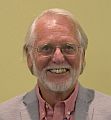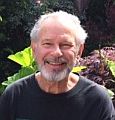RECONNECT HYDROLOGY AND STREAM ECOLOGY BY DESIGN: “Streamkeepers and habitat volunteers are pleased to see that our local governments are not only supporting water stream maintenance, they are now PROMOTING it,” stated Bernie Heinrichs, Past-President of the Island Waters Fly Fishers, and a member of the Project Advisory Committee for the Millstone River application of the Ecological Accounting Process

EAP, the Ecological Accounting Process, satisfies a local government need for a financial methodology and metrics for valuation of ecological assets. Most importantly, EAP interweaves the financial, social and ecological perspectives within a single number. This number is defined as the Natural Commons Asset (NCA) value. The end goal is an annual budget for ‘maintenance and management’ of stream systems. The NCA value puts the discussion of natural assets (stream systems) on an equal footing with constructed assets (physical infrastructure).










